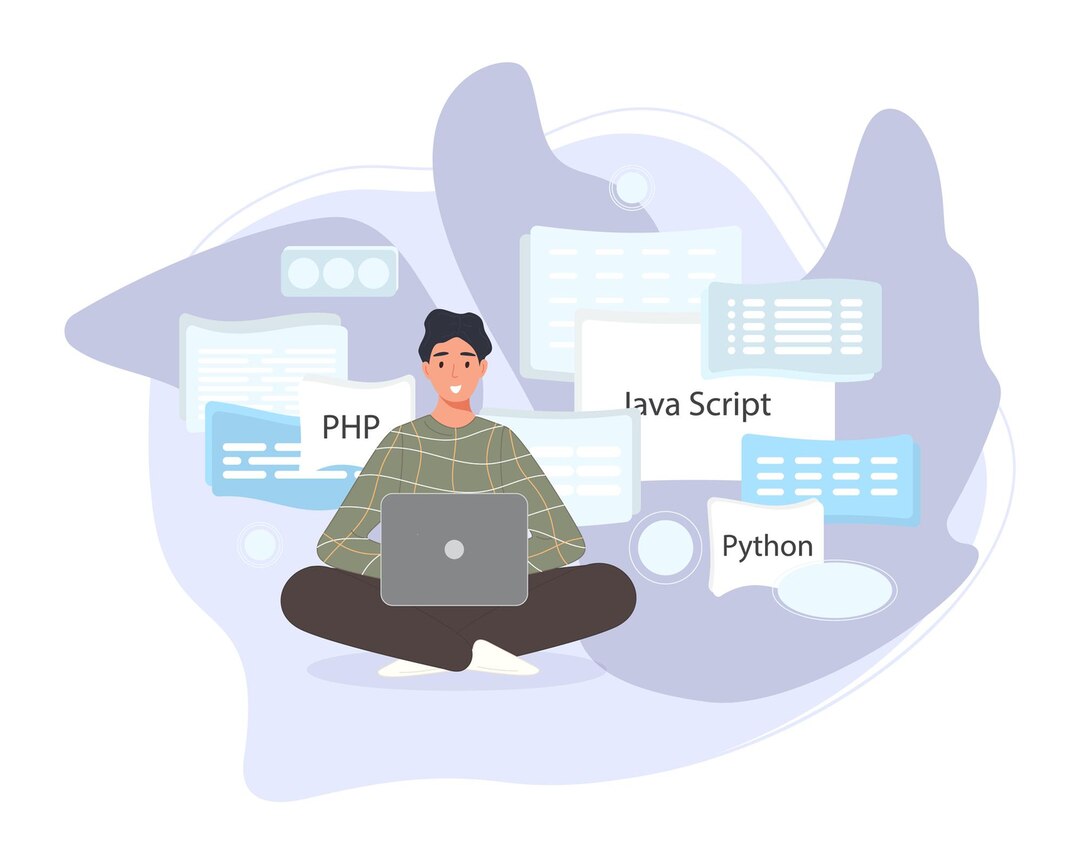As we approach 2025, the world of programming continues to evolve at an accelerated pace. New technologies, frameworks, and methodologies are shaping the world, and developers are continuously challenged to stay relevant.
Whether you’re a beginner or a seasoned developer, choosing the right programming languages to learn can significantly impact your career trajectory. Here’s a look at the top 10 programming languages to master by 2025, along with trends and predictions for their future relevance.

1. Python
Why Learn It:
Python remains one of the most versatile programming languages today. It’s highly readable, easy to learn, and has a vast ecosystem of libraries and frameworks. Python’s popularity comes from its broad applications in web development, data science, artificial intelligence, and automation.
2025 Trends and Predictions:
- AI and Machine Learning: Python is the de facto language for AI and ML development. Its dominance in these fields will continue to grow as AI becomes more integrated into various industries.
- Data Science: Python will retain its top spot for data science, with robust libraries like Pandas, NumPy, and TensorFlow leading the charge.
- Automation and Scripting: With growing needs for automation across industries, Python’s simplicity in writing scripts makes it ideal for DevOps and infrastructure management.
2. JavaScript
Why Learn It:
JavaScript is the backbone of web development. With its flexibility for front-end and back-end development (via Node.js), JavaScript has cemented its place as one of the most critical languages for modern software engineering.
2025 Trends and Predictions:
- Web3 and Decentralized Apps (dApps): As Web3 continues to mature, JavaScript will be crucial for developing decentralized applications and smart contracts (via frameworks like Solidity).
- Full-Stack Development: JavaScript’s continued use in full-stack development (with Node.js and Express for back-end) will remain popular due to its efficiency in unifying front and back-end codebases.
- JavaScript Frameworks: React, Vue.js, and Next.js will continue to dominate web development as more complex, dynamic web applications are built.
3. Go (Golang)
Why Learn It:
Go, developed by Google, is gaining traction for its simplicity, speed, and strong support for concurrent programming. It’s especially popular for building cloud-native applications, microservices, and distributed systems.
2025 Trends and Predictions:
- Cloud Computing and Kubernetes: Go is the language behind key cloud infrastructure projects like Kubernetes and Docker. Its influence will continue to grow as companies adopt more cloud-native architectures.
- Microservices: Go’s efficiency in building lightweight, scalable microservices will make it a dominant choice in modern software architecture.
- Performance: Its high performance and low latency make Go ideal for performance-critical applications like fintech, gaming, and real-time systems.
4. Rust
Learn It:
Rust is a systems programming language that emphasizes safety and performance. It’s known for preventing common memory-related bugs, making it ideal for building secure, high-performance applications.
2025 Trends and Predictions:
- Security-Critical Applications: With cybersecurity concerns on the rise, Rust’s ability to prevent memory vulnerabilities makes it a prime candidate for building secure applications.
- Systems Programming: Rust will continue to gain ground in systems-level programming, competing with C and C++ for developing operating systems, databases, and embedded systems.
- Blockchain Development: As blockchain continues to evolve, Rust is increasingly being used for building decentralized protocols and applications due to its performance and safety guarantees.
5. TypeScript
Why Learn It:
TypeScript is a superset of JavaScript that introduces static typing, making large-scale JavaScript applications easier to manage and less prone to runtime errors.
2025 Trends and Predictions:
- Enterprise-Grade Applications: TypeScript’s static typing provides added safety and predictability, making it the preferred choice for large-scale enterprise applications.
- Front-End Development: TypeScript will continue to dominate front-end frameworks like Angular and React as developers seek more maintainable codebases.
- Back-End Support: With frameworks like NestJS, TypeScript is becoming a popular choice for back-end development alongside Node.js, giving developers the best of both worlds.
6. Kotlin
Why Learn It:
Kotlin is the official language for Android app development, replacing Java in many cases due to its modern, concise syntax. It’s fully interoperable with Java and is widely used in mobile and web applications.
2025 Trends and Predictions:
- Android Development: Kotlin will continue to dominate Android development as Google’s preferred language, with more developers adopting Kotlin-first approaches.
- Multiplatform Development: Kotlin’s multiplatform capabilities (Kotlin Multiplatform) will make it a popular choice for sharing code between Android, iOS, and web applications.
- Server-Side Development: Kotlin will grow in the server-side space as its performance and simplicity make it an attractive alternative to Java for backend services.
7. Swift
Why Learn It:
Swift is the go-to language for iOS, macOS, watchOS, and tvOS development. Its modern syntax and safety features make it easier to develop mobile applications efficiently.
2025 Trends and Predictions:
- iOS Development: As Apple devices continue to proliferate, Swift will remain essential for iOS and macOS development.
- Cross-Platform Frameworks: SwiftUI will grow in popularity for building cross-platform applications that run on both iOS and macOS with less code duplication.
- Embedded and IoT Devices: Swift’s performance optimizations make it well-suited for the growing market of embedded systems and IoT devices that integrate with Apple’s ecosystem.
8. C++
Why Learn It:
C++ remains a powerhouse for performance-intensive applications like game development, real-time simulations, and high-frequency trading platforms. It offers direct hardware manipulation and high-speed execution.
2025 Trends and Predictions:
- Game Development: C++ will continue to dominate game engines like Unreal Engine due to its unparalleled performance in rendering and real-time simulations.
- Embedded Systems: The rise of IoT and edge computing will keep C++ relevant in developing embedded systems and firmware.
- AI in Performance-Critical Applications: AI models that require low-latency operations, especially in gaming and robotics, will rely on C++ for efficient execution.
9. R
Why Learn It:
R is a statistical programming language used for data analysis, data visualization, and statistical computing. It is widely employed by statisticians and data scientists for its robust data-handling capabilities.
2025 Trends and Predictions:
- Data Science and Analytics: R will continue to be widely used in academic and research settings for advanced statistical analysis, data mining, and predictive modeling.
- Machine Learning: With packages like caret and xgboost, R will maintain its position in machine learning and predictive analytics, although Python is catching up in this space.
- Bioinformatics and Research: R will remain critical in bioinformatics and medical research, where statistical modeling plays a vital role.
10. SQL
Why Learn It:
SQL (Structured Query Language) remains essential for managing and querying relational databases. While it’s not a general-purpose language, its importance in data management cannot be overstated.
2025 Trends and Predictions:
- Big Data: SQL will continue to be integral for handling large-scale databases in both relational (SQL databases) and non-relational (NoSQL databases) environments.
- Data Analytics: SQL is indispensable for data analysts and data engineers working with large datasets, and its importance will only increase as businesses become more data-driven.
- Integration with Other Languages: SQL’s integration with languages like Python, R, and Java will remain essential for data pipelines, ensuring its relevance in data science and business intelligence applications.
Conclusion
The tech space in 2025 will demand a blend of versatile, secure, and scalable programming languages.
Python and JavaScript will remain at the forefront due to their broad applicability, while languages like Go, Rust, and TypeScript will grow in importance as the need for performance and security continues to rise.
For developers, learning these languages will not only future-proof their careers but also provide opportunities to work on cutting-edge technologies across diverse industries.

















